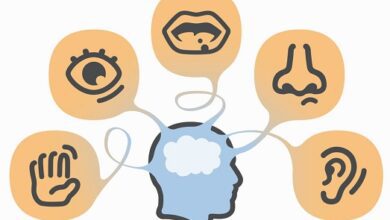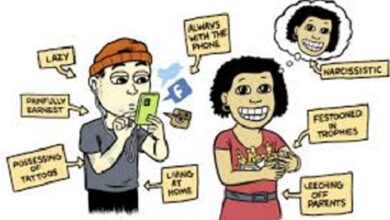Community language learning/teacher/student roles
Community learning
Community language learning was pioneered in the 1960s by psychologist Charles A. Curran who worked at Loyola University, Chicago. At first, he applied his psychotherapeutic studies to correct certain speech defects and later applied these theories and the experience in the field of group psychotherapy in the teaching of foreign languages. As the specialist Natalia Auer affirms, it is about using the psychological counseling technique in the field of language learning so that the learner achieves optimal communicative competence.
The theoretical approach from which it starts has a structuralist vision, but it also provides the novelty of conceiving the learning of a second language as a social process in which the speaker is both subject and object of said process. There is therefore an essential interactive vision in learning in two ways. The first of these is the one practiced among the students themselves and from which a series of materials will emerge that will be the object of study, analysis, and reflection. In this sense, it is considered essential that students exploit the desire to share intimacies because a climate of relaxation that favors learning will be fostered. On the other hand, interactivity between students and teacher is contemplated, whose role will lie in offering a series of procedural guidelines to create in the student an atmosphere of security that is essential so that their progression and gradual self-sufficiency can be carried out. The degree of dependency will gradually decrease as the learner acquires a series of elements and skills necessary to know how to function adequately in the learning process.
The basic linguistic theory consists of considering language as a space that allows subjects to be social beings: a common code can be accessed, which allows collective interaction and grouping. Language is, in this way, a social process.
The method focuses on aspects related to the processes of socialization and identification – interaction with the speakers of the target language and their culture. The linguistic aspects focus on sociolinguistic and psycholinguistic issues; In other words, it is assumed that the linguistic and the social cannot be separated.
Main exponents
The method developed by Charles A. Curran and other colleagues of this professor of psychology and specialist in psychological counseling.
Guidelines What is community language learning?
Learning is specified in psychological and social terms, not in communicative or linguistic terms. It is a student-based approach.
It is located within the language teaching methods that use humanistic techniques, which can be defined as those that unite what the student feels, thinks, and knows with what he learns in the target language. That is, they are comprehensive in that they consider all the aspects that define the person (feelings, emotions, and behavioral skills) and establish that true learning is both affective and cognitive. This approach is called whole-person learning.
It uses language alternation, which is a technique used in certain bilingual education programs, which consists of presenting content in the mother tongue and then in the second language. Students understand the meaning in L2 because they remember the meaning in the mother tongue.
This approach encourages interaction between students and encourages cooperation between them. This causes an exchange of content of an affective nature that strengthens the intimacy and motivation of the student to follow and maintain the learning rhythm of others.
Learning is not considered an individual but a collective achievement.
According to this method, the psychological elements necessary to facilitate learning can be abbreviated by the acronym SARD:
1-Security
2-A
Attention and aggression. Attention is an indicator of how involved the student is in the learning process and aggression to designate the energy with which a student seeks to show what he knows after learning it.
3-R
Retention and reflection. Retention refers to everything that a truly involved student manages to internalize and incorporate into their personality during the learning process. Reflection is a period of silence during which the student evaluates their current learning status and reconsiders their future goals.
4-Discrimination
It occurs when the student has managed to internalize a certain amount of information that allows him to see the need and possibility of organizing it, establishing relationships between the various elements, and having a more precise sense of discrimination. It is then when the use of the language is achieved for communicative purposes outside the classroom.
Teacher role
Because this learning is based on the Rogerian theory of psychological counseling, which consists of a person advising and helping another who has a problem or need, the teacher’s role is basically that of a student advisor or “ clients ”in a language learning process. Teacher-student interaction is essential in this approach. What is community language learning?
The teacher responds calmly and without making value judgments. It helps the student to better understand their own problems through organization and analysis, very similar to the role of an advisor during a counseling session.
In addition, it is the means of expressing the language in class, because in the initial stages it receives the communicative intentions of the student in the mother tongue and is in charge of reformulating and expressing them in the most appropriate and faithful way in the target language.
The teacher gives advice and accompanies the student from the beginning when he depends on him to express himself until he becomes independent and can fend for himself. The interaction and development of student-teacher relationships are essential to generate this process, which is made up of five stages comparable to the development of a child. The first stage or “birth” establishes feelings of security and belonging. In the second stage, the student improves his abilities and can achieve some independence. In the third, the student speaks independently and may need to affirm their own identity. In the fourth, the student considers himself secure enough to accept criticism. In the fifth, the student works to improve his style and knowledge and by then he is considered an “adult”.
The student-teacher relationship must include validation or validation by consensus, which is a mutual evaluation of the worth of the other person in positive terms of kindness and understanding.
The teacher will propose exercises whose objective is the search for self-realization and the strengthening of the self-esteem of their students. You must use techniques that help to achieve a climate of good relations in the class, greater group cohesion, self-acceptance, and acceptance of others. What is community language learning?
Student role What is community language learning?
The role he must fulfill is to express himself in all his integrity (feelings and emotions included) and according to his personality. In the beginning, it expresses itself with dependence on the teacher but later it is gaining independence. You need to develop the psychological elements outlined in SARD, interact cooperatively with your peers, be creative, and actively participate in-class activities.
The student is free to decide the thematic contents of the class since no textbook is used.
Presence of grammar
A program that follows this approach does not define language or communication objectives. Therefore, in an approach using this method, there is no defined grammar program or content structure that must be taught in a certain order.
A program based on community learning focuses on the themes that students choose to cover. On some occasions, the teacher will have to isolate grammatical and lexical elements to study them in retrospect of the development of the lesson and in this way give a place to the linguistic elements.
It could then be said that grammar in a pure community approach would be implicitly taught through the teacher’s interpretations or translations and the student must induce it through the interaction that characterizes this learning.
Handling errors What is community language learning?
In this sense, it is possible to return to the ideas of La Forge (1983), Curran’s student, regarding language as a social process: “Language is people, language is people in relationship, language is people’s responses.”
Errors are corrected through the interactive processes that are characteristic of community learning, both between the same classmates who make up a community that corrects and helps each other, and between the student and the teacher. This process in turn encourages the student’s self-evaluation.
Errors should be treated in a non-frightening way and it is suggested to repeat them incorporating the respective correction.
Students depend primarily on the teacher. As they gain autonomy in the use of the language and the expression of their own ideas, they go through different phases until they become independent and self-confident. During this process, the teacher is a kind of advisor to the student, since from him he receives advice, self-affirmation, security, and support for his personal improvement.
In this way, the treatment of errors is present throughout the entire process, through interaction in favor of the integral development of the person, of overcoming challenges and obstacles, always taking into account the affective component of the human being.

